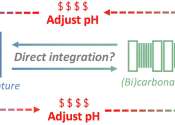Battery-powered trains could be a climate game changer. Is everyone all aboard?
Colossal freight locomotives are a fixture of the American landscape, but their 4,400-horsepower engines collectively burn 3.5 billion gallons of diesel annually, at a time when railroads and other fossil fuel users face ...
Jul 7, 2021
1
5









